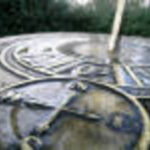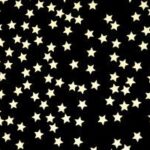Stargazing in the Spring especially during the month of April becomes easier, because of the slightly warmer nights and the distinct constellations that fill the night sky. To do any stargazing at night I recommend finding a star chart to help give you a basic idea of all the stars in each constellation. Each of the constellations that are in this night sky guide are visible with the naked eye, you will not need a telescope or binoculars to find any of them. I find it easy to determine the distance of objects in the sky using my fist so I will give directions using this reference. You will need to remember that my fist may be larger or smaller than your fist so this is just a rough guide.
Night Sky Markers
Just about everyone is able to identify the Big Dipper in the sky and during the month of April it is high in the night sky. The Big Dipper can be used as a starting point to find other constellations and objects in the sky. Looking directly up into the night sky you will see four stars that form a distinct rectangle and three stars that branch of the upper left star of the rectangle forming the handle of the dipper. The two stars that make up the right side of the rectangle are known as the Pointers. If you make a line directly North of The Pointers, about the length of two fists, you will come across a relatively empty patch of sky with a star slightly brighter than the rest. This star is Polaris, the pole star. Following The Pointers South you will find the constellation Leo.
Constellations
Ursa Major and Ursa Minor or the Great Bear and the Little Bear are the most prominent constellations in the sky this month. Seven of the stars that make up Ursa Major are known as the Big Dipper. To find the Big Dipper and eventually Ursa Major look directly overhead and the Big Dipper will be a distinct rectangle of stars with three stars forming a handle off the left side. The Big Dipper form the tail and rear of Ursa Major, the hind legs trail down from the bottom left star of the rectangle, the front legs descend from the bottom Pointer star and the head and rest of the body extend out from the Two Pointers creating a house on its side. The entire body not including the tail is about two fists in length.
The more common legend surrounding the origin of Ursa Major is that the bear is actually a nymph, named Callisto, that Zeus turned into a bear to protect from his wife Hera who found out about the affair. Zeus placed Callisto and then her son Arcas, Ursa Minor, in the sky to watch over her.
Ursa Minor, also known as the Little Bear, is amazingly very similar to Ursa Major. Like Ursa Major its stars form a distinct dipper shape but its tail extends north with the final star being Polaris. To find Ursa Minor look about two fist lengths above Ursa Major.
Meteors
A minor meteor shower marks the night sky during the month of April. Radiating from the constellation Lyra in the Northeast corner of the Northern Hemisphere is the Lyrid meteor shower. I like this meteor shower because the meteors always leave long tails behind them when they shoot through the sky making them much more visible than other meteors that you can easily miss if you blink. The best time to catch the Lyrids is the third week in April. Enjoy!






